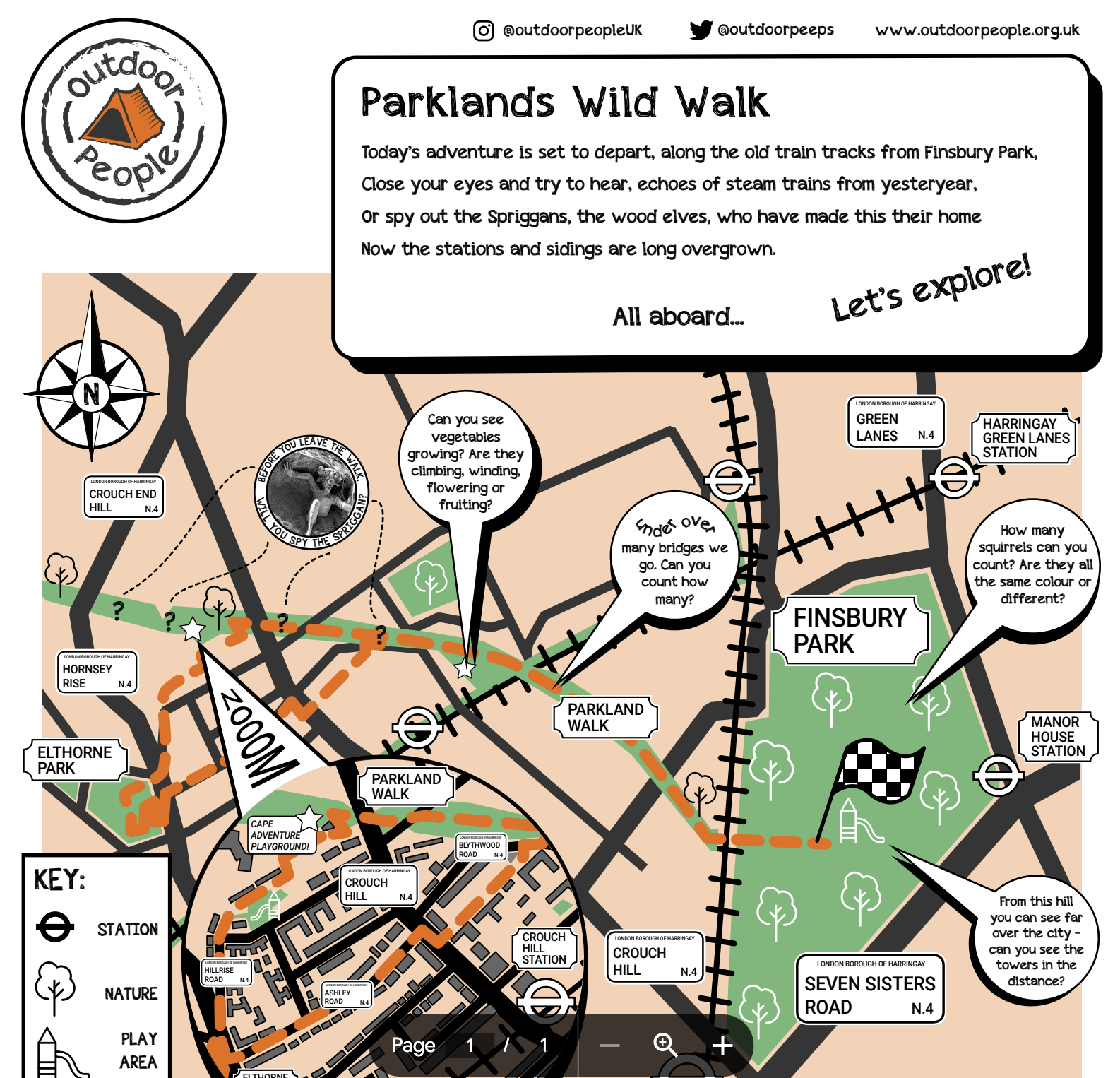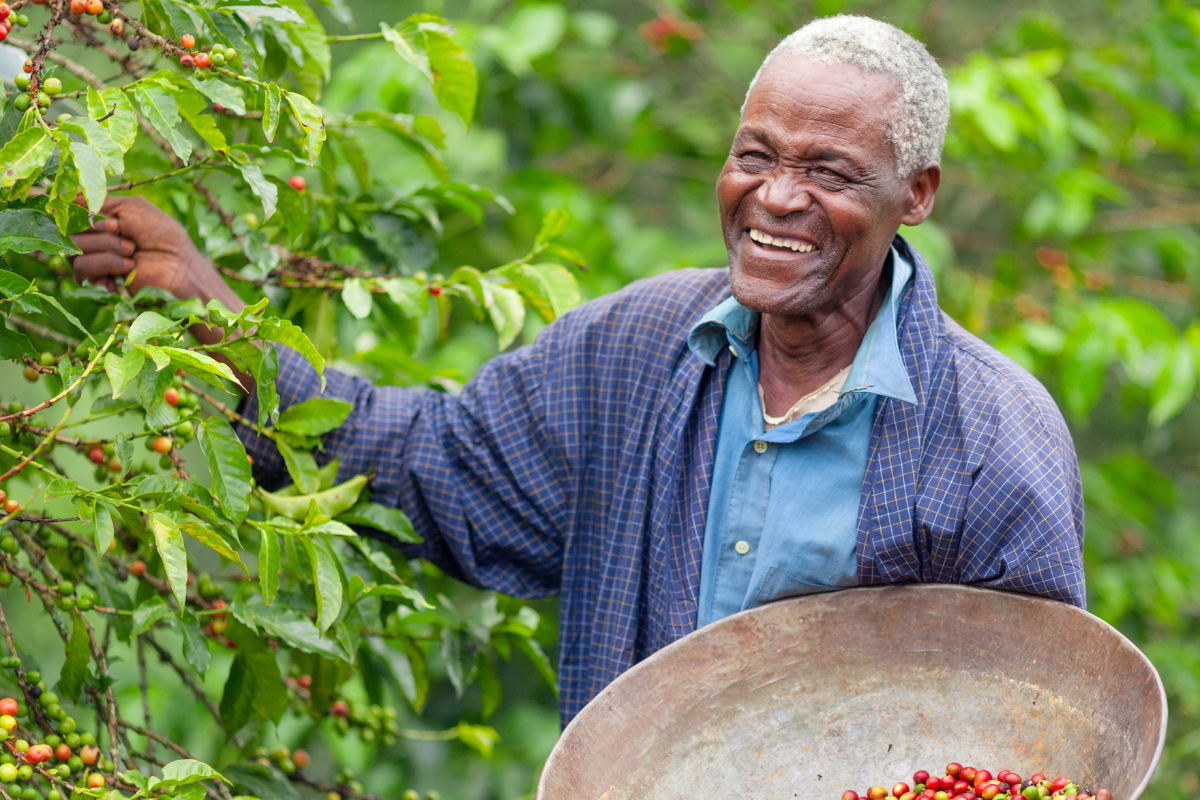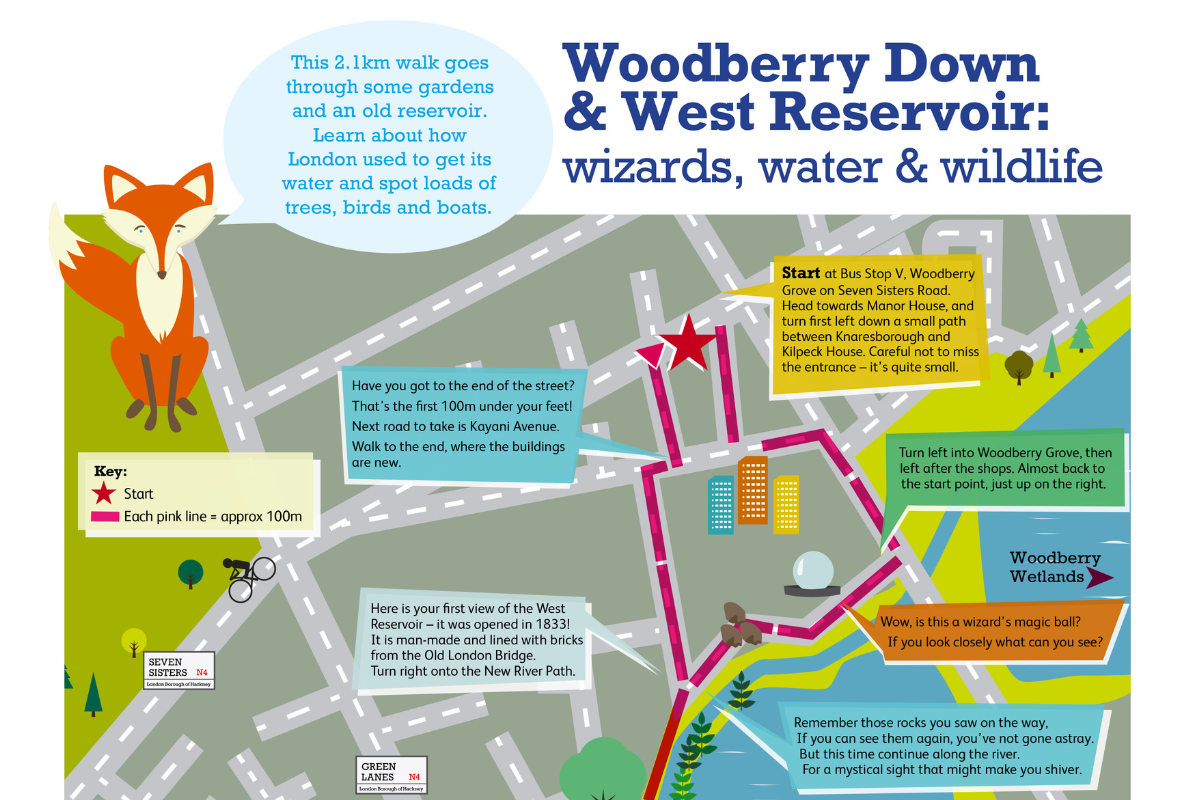365 Ways to Help the Planet - Part 5
We have another full month worth of daily ways to help the planet. As May was National Walking Month there’s plenty of walking ideas from Living Streets, Footways and some more routes from Outdoor People. We also have some great ways to empower volunteers and strengthening communities. If you run a business or just want to make your workplace more sustainable there’s plenty of tips for you.
If you haven’t already, be sure to have a look at Part 1, Part 2, Part 3 and Part 4 of our Ways to Help The Planet series.
If you’re a business and looking for ways to make your business more sustainable have a look at Creating a Culture of Sustainability: Best Sustainable Business Practices and Training.
122 Walk 20 minutes a day
May is Living Streets’ National Walking Month
There are always plenty of activities happening throughout the month to get involved with. One excellent challenge to try is to walk 20 minutes a day in May. In 2023 Go Jauntly teamed up with Transport for London to bring a wonderful and free walking challenge.
The goal was to encourage people to walk at least 20 minutes a day in May. Walking 20 minutes each day adds up to 140 minutes a week which is a great weekly target. It’s also very close to the NHS recommendation for adults to get at least 150 minutes of exercise per week.
Ideas inspired by Living Streets and their Try20 checklist
Tip 1. Invite friends and family for a walk: Gather your loved ones and embark on a shared walking adventure. Whether it's a leisurely stroll in the park or a brisk hike in the countryside, the company of friends and family can make the experience even more enjoyable.
Tip 2. Take a walking meeting: Combine productivity and wellness by suggesting walking meetings. Instead of confining discussions to a conference room, take your colleagues outdoors for a refreshing and invigorating conversation.
Tip 3. Let nature guide you: Allow the natural world to be your guide. Choose a path that meanders through lush forests, alongside serene rivers, or up to breathtaking viewpoints. Nature's beauty can rejuvenate your spirit as you explore.
Tip 4. Walk to and from work: Swap your daily commute for a walk whenever possible. Not only does it reduce your carbon footprint, but it also helps you start and end your workday on a positive note.
Tip 5. Get snappy 📸: Capture the stunning sights you encounter during your walks. Photography not only preserves your memories but also encourages you to pay closer attention to your surroundings.
Tip 6. Transform your street: Organise a community effort to beautify your neighborhood. Plant trees, flowers, and shrubs, and create a more welcoming environment for pedestrians.
Tip 7. Walk to the shops: Instead of hopping in the car for quick errands, consider walking to nearby shops. It's a great way to add purpose to your walk and reduce your carbon footprint.
Tip 8. Scavenger Hunt: Make your walk an exciting treasure hunt by creating a list of items to find along the way. Engage your observational skills and have fun discovering hidden gems.
Tip 9. Have an adventure: Explore new trails and pathways to inject an element of adventure into your walks. Discovering unfamiliar territory adds excitement and intrigue to your routine.
Tip 10. Let kids lead the way: If you're walking with children, let them take the lead. Their curiosity and imagination can lead to unexpected detours and delightful discoveries.
Tip 11. Get Creative: Incorporate creativity into your walks. Bring along a sketchbook, journal, or musical instrument, and let your surroundings inspire your artistic side.
Tip 12. Treat yourself: Plan a walking route that includes a visit to a favorite café, park bench, or scenic spot. Treat yourself to a moment of relaxation or a delicious snack.
Tip 13. Get picking: During certain seasons, nature provides edible treasures like berries or wild herbs. Educate yourself about local foraging and gather fresh, natural ingredients along the way.
Tip 14. Evening stroll: Embrace the calm and beauty of the evening by taking a sunset stroll. It's a wonderful way to wind down after a busy day.
Tip 15. A mindful meander: Practice mindfulness while you walk. Pay attention to your breath, the rhythm of your steps, and the sensations in your body as you move.
Tip 16. Walk the rainbow: Challenge yourself to find objects in each color of the rainbow during your walk. It's a creative way to engage with your surroundings.
Tip 17. Prepare for the weather: Dress appropriately for the weather conditions. Rain or shine, there's a unique charm to each type of weather.
Tip 18. Reach out: Use your walks as an opportunity to connect with others. Call a friend, family member, or colleague and catch up while you stroll.
Tip 19. Power walk to the finish: Challenge yourself with an intense power walk during the final stretch of your route. It's a great way to get your heart rate up and boost your energy.
Tip 20. Share your highlights: After your walks, share your favorite moments, photos, or interesting discoveries with friends, family, or on social media. Inspire others to get out and explore too!
127. The Central London Footways map offers beautiful backstreet walking routes
The new third edition of the Central London Footways map provides quiet and enjoyable routes from mainline stations to places of interest. .
Emma Griffin, co-founder of Footways said: “It takes just 20 minutes to walk from Victoria to Westminster, 30 minutes from Waterloo, or 10 minutes from Paddington to Hyde Park, and you’re guaranteed to see the best of London on our feature-filled routes.”
David Harrison, co-founder of Footways said: “Historically, people walked to great events from the stations Millions visited London to see the Great Exhibition of 1851 and many went on foot. Queen Victoria saw ‘three whole parishes …from Kent and Surrey (800 in number) walking in procession, two and two’. Try it, and arrive happier and healthier.”
128. Find a place of your Greenspace - The Importance of Finding a Green Space
Living in a city often means being surrounded by concrete, noise, and a fast-paced lifestyle. Amidst this urban chaos, it becomes crucial to find solace and connect with nature. One of the most effective ways to achieve this is by seeking out green spaces within your city. These pockets of nature not only provide a much-needed escape from the urban hustle but also play a vital role in promoting sustainability. In this article, we will explore the importance of finding a green space local to you and how it can contribute to positive change for the planet.
129. The Big Help Out: Empowering Volunteers and Strengthening Communities
The Big Help Out is a voluntary initiative that brings together prominent volunteer organisations in the UK, such as the Scouts, the Royal Voluntary Service, and the Shaping the Future with Volunteering group. It aims to raise awareness about the importance of volunteering and create opportunities for individuals and organisations to make a positive impact in their communities. Unlike profit-making or fundraising initiatives, The Big Help Out focuses solely on promoting volunteering and driving meaningful change.
1. Inclusive and Open to All
The Big Help Out welcomes everyone to participate, regardless of age, background, or affiliation. Whether you're an individual looking to contribute or an organisation seeking to engage your members, this initiative provides a platform for everyone to get involved. By joining The Big Help Out, you become part of a larger movement dedicated to making a difference through volunteerism.
2. Enhancing Volunteerism
One of the primary objectives of The Big Help Out is to enhance the visibility and importance of volunteerism across the UK. By raising awareness about the value of volunteering, the initiative aims to inspire more individuals to offer their time and skills for the betterment of their communities. The Big Help Out serves as a catalyst for encouraging people to explore volunteer opportunities and experience the transformative power of giving back.
3. Community Impact
At the heart of The Big Help Out is the desire to create a positive impact in local communities. By participating in the initiative, individuals and organizations can identify and address community needs, contributing to the betterment of society. Whether it's supporting vulnerable populations, promoting environmental sustainability, or improving community infrastructure, The Big Help Out empowers volunteers to make a tangible difference where it matters most.
4. Collaboration and Networking
The Big Help Out acts as a hub for connecting individuals and organisations with shared interests in volunteering. By participating in this initiative, you gain access to a network of like-minded individuals and groups, fostering collaboration and the exchange of ideas. Through collective action and shared resources, The Big Help Out encourages the development of strong and resilient communities.
5. Personal Growth and Fulfillment
Engaging in volunteering activities through The Big Help Out offers individuals an opportunity for personal growth and fulfillment. By stepping outside of their comfort zones and contributing to meaningful causes, volunteers can develop new skills, gain valuable experiences, and broaden their perspectives. The sense of fulfillment derived from making a positive impact can have a profound effect on an individual's overall well-being.
130. Reducing water usage
Reducing water usage is a crucial step towards promoting eco-friendliness and sustainability in businesses. By implementing effective water conservation strategies, UK businesses can contribute to the preservation of water resources and minimise their environmental impact.
Reducing Water Usage for a Sustainable Future: A Guide for UK Businesses
131. Volunteer with The 4th Reserve
The Fourth Reserve Foundation is a charity which protects, enhances and manages the Buckthorne Cutting Nature Reserve for community benefit. This provides a wildlife sanctuary and nature refuge for visitors in the heart of Southeast London.
Since 2018, Buckthorne Cutting Nature Reserve, lying between Crofton Park and Honor Oak Park, has been open to school groups and local community groups. It is also open to the public via open days, volunteer workdays and events.
The Buckthorne Cutting Nature Reserve is only one of several adjacent sites along the railway cutting between Brockley and Honor Oak Park being looked after or saved from development by the Fourth Reserve Foundation. These include community use areas such as The Eddystone Road Footbridge sitting out area and the play area at the top of Courtrai Road.
The Fourth Reserve Foundation manages, develops and campaigns to save these well-used sites, popular with the community, as well as rare ancient woodland, sites of geological importance and managed nature reserves.
132. Get a vertical farm for your office
Square Mile Farms use vertical farming to help people and businesses be healthier and more sustainable
They create beautiful spaces that enrich the lives of city dwellers, providing them the incredible physical and mental #wellbeing benefits of plants and whilst promoting a more #sustainable agricultural system.
133. Nature-inspired yoga
Nature-inspired yoga and mindfulness activities engage children with the natural world while teaching relaxation techniques. By imitating forest animals through yoga poses, kids experience movement and storytelling. Mindfulness, achieved through breath and sensory awareness, fosters calm and stress management. These activities cultivate empathy for nature, building environmental consciousness. Beyond physical benefits, these practices empower children with essential life skills and a deeper connection to both themselves and the planet.
134. Parklands Wild Walk
This adventure is set to depart, along the old train tracks from Finsbury Park, Close your eyes and try to hear, echoes of steam trains from yesteryear, Or spy out the Spriggans, the wood elves, who have made this their home
Now the stations and sidings are long overgrown.
Nearest station: Manor Park Underground or Finsbury Park Station
Nearest bus stop: Seven Sisters Road, Alexandra Grove Stop Q
These walks have been developed by Outdoor People with support from the families and volunteers that join our walks, with great thanks for funding from Hackney Giving, the National Lottery Community Fund, Arc'teryx Outer Peace and Its Great Out There
135. Make a pledge
One of the activities we do during our Waste, Litter and The River Lea Primary School sessions is to ask pupils to create a pledge.
The pledge is entirely their own and a response to the session.
We hope that the ideas here might inspire you to make your own pledge.
136. Gardening is a sport
It's about meeting other people, rooting you in your community, giving you a sense of connection with the land. It's good for your physical and mental health.
137. Encourage remote working in your business
The 2023 Mental Health awareness week’s theme was anxiety. As an employer it’s important to consider your employees working environment and how that relates to their productivity and mental wellbeing.
There are several studies that demonstrate the relationship between remote working and reduced stress levels. Here are some common findings and themes:
1. Increased control and autonomy
Remote working allows individuals to have more control over their work environment, schedule, and workflow. This increased autonomy has been associated with lower stress levels, as it allows employees to manage their work in a way that suits their personal preferences and needs.
2. Reduced commuting stress
Remote workers can avoid long commutes, which are often a significant source of stress. By eliminating or reducing commuting time, individuals have more time for rest, personal activities, and family engagements, resulting in lower overall stress levels.
3. Improved work-life balance
Remote work provides an opportunity to better integrate personal and professional commitments. The ability to allocate time for family, hobbies, self-care, and other non-work activities helps individuals achieve a healthier work-life balance, which can contribute to reduced stress levels.
4. Decreased workplace distractions
Working remotely often eliminates or reduces distractions commonly found in traditional office settings. This absence of interruptions and office politics can create a more focused and conducive work environment, leading to decreased stress levels and increased job satisfaction.
5. Enhanced well-being and job satisfaction
Studies have shown a positive correlation between remote work and employee well-being. When individuals have the flexibility to structure their work in a way that aligns with their needs, they tend to experience higher job satisfaction and lower stress levels.
138. Take Part in Walk to School Week
This five-day walking challenge is a celebration of the walk to school and the perfect activity to run as part of National Walking Month this May
This fun and engaging week-long activity for primary schools has been built to make pupils experience first-hand the importance of walking to school.
Through this challenge, children will be well on their way to reaching their recommended 60 minutes minimum of physical activity per day before even reaching the school gates!
Last year, over 750 schools across the UK took part
139. Get Guerrilla Gardening
Hackney local Ellen Miles has put everything you need to know into one, accessible manual - packed with illustrated 'how to's, photos of grey-to-green transformations, and inspiring tales from around the world.
Guerrilla gardening lets you take social justice and climate action into your own hands. So, if you want to boost biodiversity, unite communities, create beauty, grow food, or make a political statement, it's time to Get Guerrilla Gardening is available now.
140. Orienteering and navigation games
Orienteering and navigation games provide children with hands-on navigation skills using maps and compasses in outdoor settings. As they follow maps and use compasses to find markers, kids develop critical thinking and spatial awareness. These activities not only teach valuable skills but also foster a stronger connection to nature and encourage teamwork. Through these games, children become explorers, problem solvers, and outdoor enthusiasts, gaining confidence and appreciation for both the environment and their abilities.
141. Victoria Park & Mile End Wild Walk
Big ponds, littles ponds and long canals,
Bridges and bridges... how many do you count?
Statues and sculptures, big and round, thin and tall,
The fish, the horse, the Suffragette... can you find them all?
Lead the way, and don’t forget to picnic and play!
This walk is also available to follow on Go Jauntly
142. Keep a Green Journal
Keeping a green journal, also known as an environmental or eco-journal, can offer numerous benefits for both individuals and the planet. Here are some key advantages. Read our blog post on Keeping a Green Journal.
143. How to create a container garden for wildlife
Creating a meadow pot is a wonderful way to bring a small-scale wildflower meadow into your container garden. Here's how you can make a meadow pot:
Select a large container
Choose a wide and deep container to provide enough space for the plants to grow and thrive. A pot with a diameter of at least 18 inches (45 cm) or larger works well.
Choose the right soil mix
Use a well-draining soil mix suitable for container gardening. A mix of equal parts compost, garden soil, and sand or perlite will work well for most wildflower species.
Select native wildflower seeds
Choose a mix of native wildflower seeds that are suitable for your region and the growing conditions of your container. Look for a mix that includes a variety of flower shapes, sizes, and colours to add visual interest. You can find wildflower seed mixes specifically labelled for meadow or pollinator gardens.
Prepare the container
Fill the container with the soil mix, leaving about an inch (2.5 cm) of space at the top. Gently firm the soil to create a stable base.
Sow the seeds
Sprinkle the wildflower seeds evenly over the soil surface. You can mix the seeds with a small amount of sand or vermiculite to help distribute them more evenly. Press the seeds lightly into the soil, but avoid burying them too deep.
Water the seeds
Water the container gently but thoroughly, ensuring the soil is moist. Use a fine mist or a watering can with a rose attachment to prevent washing away the seeds. Keep the soil consistently moist throughout the germination and establishment period.
Provide proper sunlight
Place the container in a location that receives full sun for at least 6 to 8 hours a day. Wildflowers generally require ample sunlight to grow and bloom successfully.
Maintain the meadow pot
Water the meadow pot regularly to keep the soil moist but not waterlogged. Monitor the growth of the seedlings and thin them out if they become overcrowded. Follow any specific instructions provided with the wildflower seed mix regarding maintenance and watering.
Enjoy the meadow
As the wildflowers grow and bloom, your meadow pot will come alive with colours and attract pollinators like bees, butterflies, and other beneficial insects. Take time to appreciate the beauty and observe the wildlife that visits your mini meadow.
Remember that wildflowers can have different growth habits and blooming times, so your meadow pot may display changing colours and textures throughout the growing season. Enjoy the natural beauty and the benefits it brings to pollinators and the environment.
144. Implement green procurement
In the pursuit of building a business that thrives not only economically but also ethically, the choices you make reverberate far beyond the confines of your office walls. Opting for environmentally responsible products and services isn't just a token gesture; it's a powerful stride towards contributing positively to the planet. Here's how you can take tangible steps towards a sustainable business model:
Brew Responsibly
Start your day with a cup of conscience. Choose organic or FairTrade certified coffee and tea for your workplace. By supporting ethical sourcing practices, you're not only enjoying quality beverages, but you're also empowering farmers and promoting sustainable agricultural practices.
Clean with Care
The cleaning supplies we use daily can leave a lasting impact on our surroundings. Transitioning to eco-friendly cleaning products not only maintains a hygienic workspace but also ensures that harmful chemicals don't find their way into ecosystems. It's a small change with big positive consequences.
Furniture with a Future
The office furniture you select speaks volumes about your commitment to sustainability. Opt for sustainable office furniture made from recycled or responsibly sourced materials. This not only reduces demand on natural resources but also encourages a circular economy.
Beyond Carbon Offsetting
True sustainability transcends simple carbon offsetting. It's about weaving environmental consciousness into your company's DNA. Create a culture of sustainability by involving your team in eco-friendly initiatives, fostering waste reduction strategies, and encouraging energy-efficient practices.
Mindset Matters
Building a sustainable business is not just a checkbox exercise; it's a mindset shift. Every decision, no matter how small, has the potential to contribute positively or negatively to the environment. By embracing a conscious approach to your business operations, you're paving the way for a brighter, greener future.
145. The Benefits of Friends Groups for parks and green spaces for volunteers - part 1
A new report from CPRE London called Which London boroughs are gaining most benefits from park friends groups? summarises data on Park Friends Groups’ activities in each London borough and presents the results of a survey carried out in January 2023
But what are the benefits to volunteers?
Parks Community UK and The National Federation of Parks and Green Spaces have created a clear graphic that illustrates the numerous benefits Friends Groups bring to a site. We all know how important volunteers are, but sometimes it is easy to forget the number of benefits they bring!
To promote the report we decided to share some of these wonderful benefits, hoping to convert the unconverted about being part of a friends group.
HEALTH
Improve fitness and wellbeing
EMPOWERMENT
Experience ownership, take initiative and make a difference
INFLUENCE
Have a real say in decision-making and improvements
146. Looking to create more space for nature? The Bee Brick® solitary bee house is perfect for you!
Whether you're a garden lover, design enthusiast, or nature admirer, the Bee Brick® is an innovative nesting site designed to add beauty to your garden while also providing a habitat for solitary bees. It's not just a decorative piece; it can replace a standard brick in construction, creating more homes for non-swarming solitary bees. This stylish brick serves as a nesting site for red mason and leafcutter bees, as well as other cavity-nesting species, adding a touch of design to any bee-friendly garden, allotment, or building.
Observing solitary bees is both captivating and educational, making them a fantastic introduction to the world of bees for children. These bees don't possess a queen or honey to protect, making them non-aggressive and sting-free.
By incorporating bee houses into your environment, alongside bee-friendly planting and other wildlife-friendly practices, you can actively contribute to the preservation of our declining bee population. Let's make a difference together!
147. Outdoor art and creative expression using natural materials
In the heart of the forest, a world of artistic wonder awaits young explorers. The concept of 'forest school' takes education beyond the classroom walls and into the embrace of nature, where children learn through hands-on experiences. One captivating activity that sparks creativity and connection with the environment is outdoor art using natural materials.
Artistry in Nature: A Palette of Possibilities
Imagine a canvas woven from leaves, a palette of soil and stones, and brushes fashioned from twigs. In this unique setting, children become both artists and adventurers, crafting their masterpieces from the treasures that the forest provides. Whether they're painting with mud, sculpting with sticks, or creating intricate patterns with fallen petals, the possibilities are as endless as the forest itself.
Nature as Inspiration: A Boundless Muse
Every leaf, pebble, and twig carries a story, waiting to be told through art. The forest becomes a boundless muse, offering an array of colours, textures, and shapes that stimulate young minds. Children learn to observe the intricate details of the natural world, channeling their observations into their creative expressions. A fallen branch can become a dragon's tail; a cluster of acorns can be transformed into a fairy's feast. Nature's artistry inspires their own.
Connection and Expression: A Harmonious Duo
Outdoor art not only nurtures artistic abilities but also fosters a deep connection with nature. As children engage in the tactile experience of shaping clay-like mud or arranging delicate blossoms, they forge a unique bond with the earth. Their art becomes an extension of the environment, a testament to their interaction with the world around them.
The Beauty of Imperfection: Embracing Change
One of the remarkable lessons that outdoor art imparts is the beauty of imperfection. Nature is in a constant state of change, and artworks created from its materials reflect this dynamic quality. Children learn that art is not just about the final product, but the process of creation itself. They learn to embrace the transient nature of their art, just as they embrace the changing seasons of the forest.
Nurturing Creative Spirits: Lifelong Lessons
Beyond the enchanting moments spent crafting amidst the trees, the lessons learned in the forest school echo into a child's future. They carry with them an appreciation for the natural world, an understanding of their capacity for creativity, and a willingness to explore beyond the ordinary. Whether they become artists, scientists, or anything in between, the spark ignited in the forest's creative sanctuary continues to burn brightly.
So, the next time you venture into the woods with young adventurers, invite them to weave their stories into the fabric of nature itself. Watch as they transform sticks into wands, mud into masterpieces, and the forest into their canvas of imagination.
148. Woodberry Down & West Reservoir: wizards, water & wildlife walk
This 2.1km walk from Outdoor People goes through some gardens and an old reservoir.Learn about how London used to get its water and spot loads of trees, birds and boats.
This walk was developed by Outdoor People in partnership with Hackney Council's Public Health team in 2014, updated in 2021.
149. Don’t kill with kindness
Spread awareness: Be kind, but not with bread! Feeding ducks and waterfowl with bread at the park may seem fun, but it can actually harm them. Bread fills them up without providing essential nutrients, making them more prone to illness. Let's prioritise their well-being!
150. How to attract butterflies to your garden
To attract butterflies to your garden in the UK, follow these tips:
1. Choose native plants
Select flowers that are native to the UK, as they are well-suited to local butterfly species. Native wildflowers like lavender, buddleia (also known as butterfly bush), marjoram, and primroses are excellent choices.
2. Include host plants
Research the specific butterflies found in your area and include their preferred host plants. For example, common nettles are host plants for the Red Admiral and Peacock butterflies. By providing suitable host plants, you can encourage butterflies to lay their eggs in your garden.
3. Optimise for sunshine
Butterflies love warmth and sunlight, so ensure your garden has areas that receive plenty of sunlight. Clear any obstructions that may block the sun, such as overgrown shrubs or trees.
4. Offer water sources
Provide shallow dishes or trays of water with pebbles for butterflies to perch on while they drink. Adding a few damp patches of soil or sand can also attract certain species that seek moisture.
5. Avoid pesticides
Minimise the use of pesticides in your garden, as they can harm butterflies and other beneficial insects. Opt for natural pest control methods or consider companion planting to deter pests.
6. Create butterfly-friendly features
Incorporate elements like rocks, logs, or boulders in your garden to create resting spots and sunning areas for butterflies. They appreciate sheltered areas during windy conditions.
7. Provide nectar throughout the season
Choose a variety of flowers that bloom at different times of the year to ensure a continuous source of nectar. This will attract butterflies throughout the season, from early spring to late autumn.
8. Respect conservation area
If you live near a designated conservation area, consult the guidelines before introducing non-native plants or making significant changes to your garden. It's important to respect and protect the local environment.
9. Participate in citizen science initiatives
Consider joining citizen science projects that monitor butterfly populations. Your observations can contribute valuable data for conservation efforts and help protect butterfly species.
10. Embrace patience and observation
Building a butterfly-friendly garden takes time. Be patient and observant, noting the types of butterflies that visit your garden and adjusting your planting choices and techniques accordingly.
By following these tips, you can create a welcoming habitat for butterflies in your UK garden, contributing to their conservation and enjoying their graceful presence.
151. Conduct sustainability assessments
Perform regular assessments of the company's environmental impact and social responsibility practices to identify areas for improvement
Conducting sustainability assessments is an essential practice for businesses seeking to minimise their environmental impact and enhance their social responsibility. By regularly evaluating the company's sustainability efforts, you can identify areas that require improvement and develop strategies for positive change.
Define assessment criteria: Establish clear metrics and standards to evaluate environmental impact and social responsibility practices. This may include energy consumption, waste management, greenhouse gas emissions, labour standards, community engagement, and more.
Sustainability assessments should be an ongoing process, evolving with changing environmental and societal concerns. Regularly revisit and update your assessment methods to ensure they remain relevant and aligned with emerging best practices.
152. The Benefits of Friends Groups for parks and green spaces for volunteers - part 2
MEANING
Give purpose and pride
ENJOYMENT
Being involved is exciting and fun
FRESH AIR
Great way to get outside and into green space
AWARENESS
Get to know about nature, the community and the neighbourhood
Read the report from CPRE London. Which London boroughs are gaining most benefits from park friends groups? which summarises data on Park Friends Groups’ activities in each London borough and presents the results of a survey carried out in January 2023




















